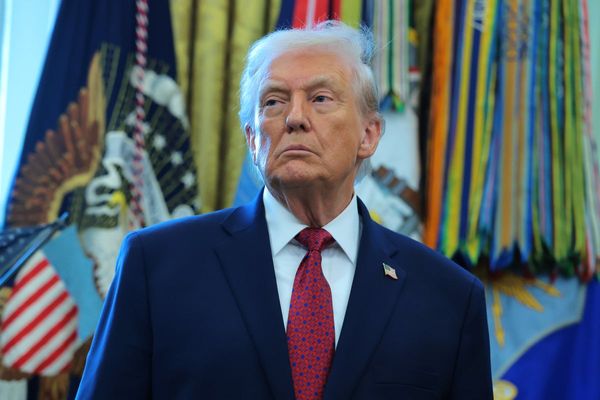
Hyundai sells some of the quickest-charging electric cars around. That has helped transform the South Korean company into one of America’s automotive tech leaders, and its Ioniq 5 crossover into one of the country’s most sought-after electric vehicles.
There’s just one obstacle: Tesla’s charging network—the country’s largest—isn’t capable of charging Hyundai's vehicles fast enough.
Take the automaker’s new Ioniq 9 three-row SUV, for example. Hook Hyundai’s family hauler up to a sufficiently powerful charger—say, 350 kilowatts—from Electrify America, EVgo or the like and it’ll charge up from 10% to 80% in a breezy 24 minutes, per Hyundai's estimate.
Go to a Tesla Supercharger, and that same stop stretches to 40 minutes, the company says.

So even though the Ioniq 9’s charging port was designed to interface seamlessly with Superchargers—and even though Hyundai drivers just gained access to Tesla’s enormous network—owners will have to go elsewhere if they want the absolute fastest charging speeds.
It just goes to show that the EV industry’s messy transition to Tesla’s charging plug design is still very much in its awkward phase.
Why Voltage Matters
The specific challenge here is voltage, which is the pressure that pushes electrons through a charging system and is often likened to water pressure in a pipe. Hyundai Motor Group’s latest and greatest EVs are all 800-volt vehicles, so they work best at stations that can supply at least that much voltage. Count stations advertising 350 kW or more in that category, along with even the 150-kW version of Electrify America chargers. Teslas have always operated at around 400 volts, so its charging network does too.

And that's a hurdle. For now, at least. "When Tesla decides to go to their higher-voltage chargers, our vehicles will be able to charge at higher powers there,” Karl Holodnick, engineering manager for propulsion and charging at Hyundai America’s Technical Center, said at the Ioniq 9’s press launch in Savannah, Georgia this month.
These two voltage levels don’t mesh automatically. So Hyundai built hardware into its vehicles, including the Ioniq 9, that can boost a Supercharger’s 400V connection up to the 800V that its batteries are designed for. Still, that process isn't as quick as using a native 800V charger. The Ioniq 9 can take in far more juice at higher-voltage non-Tesla plugs.
The SUV is able to pull 237 kW of peak charging power, placing it near the top of the EV market. Hence the quick, 24-minute pit stop. On a Supercharger, it’s limited to 126 kW, Holodnick said. But he said the Ioniq 9 should be able to hit that 126 kW quickly and sustain it for most of a charging session.
“When you read articles, a lot of people will only report peak power, but that's not a really strong measure by itself of the 10% to 80% charge time,” he told InsideEVs. “It's the curve, the area under the curve, that we're trying to optimize in order to reduce the total charge time.”
It’s broadly the same deal with the Ioniq 5, which can notch a 10%-80% charge in an impressive 20 minutes on the right charger—or 24-30 minutes at a Supercharger. Supercharging the Ioniq 9 takes longer due to its higher-capacity battery, underscoring the challenge here. The Ioniq 9 comes with a 110.3-kilowatt-hour pack, compared with the Ioniq 5’s 63 kWh and 84 kWh options.
The Messy Tesla NACS Transition
Practically the entire U.S. auto industry is migrating from an older, bulkier plug shape (CCS) to Tesla’s sleeker charging port design, now known as the North American Charging Standard (NACS). Automakers are also working with Tesla to gain access to the thousands of Supercharger stalls that make up the country’s most widespread charging network by far.
But this transition is far from settled. Manufacturers like General Motors, Ford and Rivian have gotten their customers access to the Tesla network, while others, like BMW, Honda and Volkswagen, are still working on it. Adapters are still required to interface between CCS chargers and NACS cars and vice-versa. And voltage discrepancies are complicating things too.

Hyundai has been one of the fastest movers, with two NACS-equipped EVs already on the road—the Ioniq 5 and Ioniq 9—and more on the way, including from Kia and Genesis. (These EVs come with free dongles for using non-NACS plugs.) Other 800V-plus EVs are caught in the middle of this transition too. Many car companies are moving to higher-voltage architectures, which can improve charging speeds, efficiency, thermal management and weight.
The 926V Lucid Gravity is America’s fastest-charging EV, capable of 400 kW charging and of adding 200 miles of range in under 11 minutes. It’s also among the first NACS-equipped non-Teslas. At a Supercharger, it maxes out at 225 kW—still very good, but not its peak. The Lucid Air—an older design with a similarly high voltage—can only pull 50 kW on a Supercharger, despite support 300 kW speeds on higher-voltage chargers.
Tesla’s own Cybertruck pickup has an 800V battery system, so it’s limited by the current Supercharger infrastructure too. The automaker plans to start rolling out next-generation 1000V Superchargers later this year.
And that’s where the rest of the charging industry is likely going too, Holodnick said. Other networks and charger manufacturers started with lower-powered, 400V units and are working to beef things up and provide a quicker charge. All of that is good news for owners of Hyundais and other EVs who just want a consistent, fast and fill-up experience at any station. You know, like getting gas.
“The biggest players in the field right now are mostly moving to 800-volt or higher charging systems,” he said. “My guess is there will be a point in the future where network providers will continue to converge around the higher-power chargers.”
Contact the author: Tim.Levin@InsideEVs.com
Correction May 30, 1 pm ET: This article originally stated that the Ioniq 9's charging time on a Tesla Supercharger was 41 minutes. Hyundai informed us that that is an outdated figure, and that the actual time is 40 minutes.







